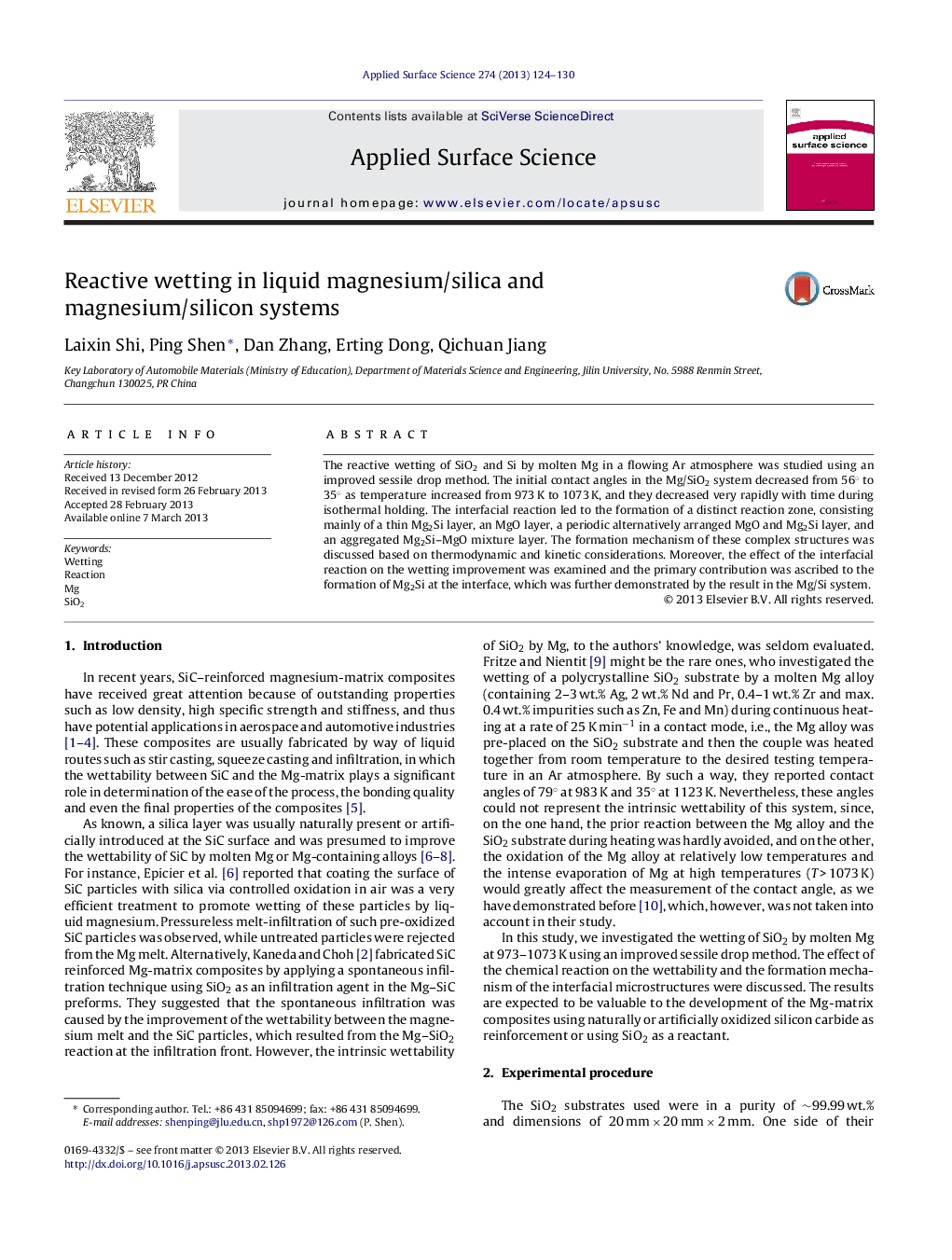| Article ID | Journal | Published Year | Pages | File Type |
|---|---|---|---|---|
| 5353516 | Applied Surface Science | 2013 | 7 Pages |
Abstract
The reactive wetting of SiO2 and Si by molten Mg in a flowing Ar atmosphere was studied using an improved sessile drop method. The initial contact angles in the Mg/SiO2 system decreased from 56° to 35° as temperature increased from 973 K to 1073 K, and they decreased very rapidly with time during isothermal holding. The interfacial reaction led to the formation of a distinct reaction zone, consisting mainly of a thin Mg2Si layer, an MgO layer, a periodic alternatively arranged MgO and Mg2Si layer, and an aggregated Mg2Si-MgO mixture layer. The formation mechanism of these complex structures was discussed based on thermodynamic and kinetic considerations. Moreover, the effect of the interfacial reaction on the wetting improvement was examined and the primary contribution was ascribed to the formation of Mg2Si at the interface, which was further demonstrated by the result in the Mg/Si system.
Related Topics
Physical Sciences and Engineering
Chemistry
Physical and Theoretical Chemistry
Authors
Laixin Shi, Ping Shen, Dan Zhang, Erting Dong, Qichuan Jiang,
